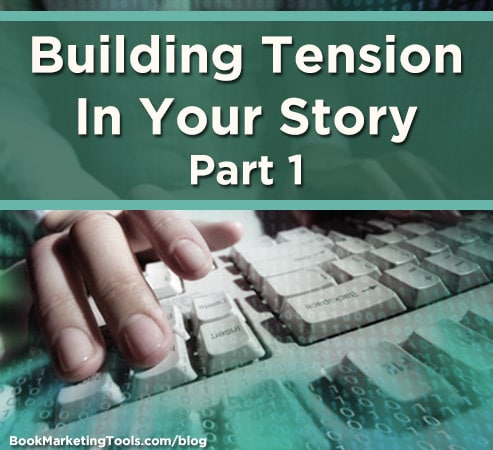Think of the last time you felt stressed. Maybe you were stuck in traffic. You had to inch along a few seconds at a time only to slam on the brakes multiple times. Horns were honking and you could see anger painted on the faces of fellow drivers across lanes of traffic. What made it all worse was that you were going to be late for a workshop you’d signed up for months ago, one that you’d paid lots of money to attend…and now you were going to miss it.
That feeling of pressure and anxiety translates into tension in your story—and let’s face the facts: if you don’t have conflict and tension in your story, it’s likely going to be pretty boring, meaning no one will want to read it. Obviously, your story is going to have low and high moments and varying degrees of tension, but I think you’d agree that you need to have tension and build it accordingly to keep readers on the edge of their seats—whether you write thrillers or romance. Because if your story has no tension, it might as well be dead.
So how can you add tension to the story or scene you’re working on? There are so many great ways to do it, but here are a few tools I utilize in my stories to build tension and keep it tight.
Play with the speed or “rhythm” to build tension.
You can begin by giving your readers large, lofty paragraphs with long, complex sentences. Think of these as large brush strokes on a canvas. You’re painting the big details of the world you’re describing. But then, as you move on, you shorten your paragraphs and your sentences to pick up the pace. What will that do? It will signal to the reader that things are moving faster, moving with purpose. It tells them that something is about to happen.
See how changing the rhythm helps build the tension in this short scene:
The room was painted in beige tones with white filmy drapes that were flowing inward from the breeze coming through the windows. The bed crowded the room, taking up a least half of the floor space, and just seeing its fluffiness made Julie sleepy. She could smell the roses in the vase on the mahogany dresser, compelling her to walk inside.
“Holy crap, Jules! You have to get down here!” From here, she couldn’t tell if Amber was excited or nervous or both—but the roses could wait.
Julie walked into the hallway but couldn’t see her friend. “Amber, where are you?” She tried not to panic when Amber didn’t answer her as she started walking down the hall, looking inside room after room…
Emphasize (or overemphasize) the details.
If you lull your reader into a false sense of security by giving him necessary but perhaps mundane details, you have left him wide open for a shock. Anything you can shock your reader with will add tension to your story. Think of it this way: Let’s say you’re driving along the highway and things have been calm and uneventful. All of a sudden, a deer jumps in front of your car. Even if you’re able to avoid the animal and hardly have to slow down, you’re tense now. That damned deer got your attention!
In my book Feverish, I spend several paragraphs explaining how the character Emily is looking in a remote area of the house for tax records and describing what she finds along the way, building tension about what she is actually going to find. By the time we get there, six hundred words later, what she finds comes as a shock!
Read more ideas for building tension in part two of this post!
Jade C. Jamison is the indie author of 30+ books, ranging from romance to horror (and even one book of writing advice: Indie Writer Companion). Come say hi at www.jadecjamison.com!

